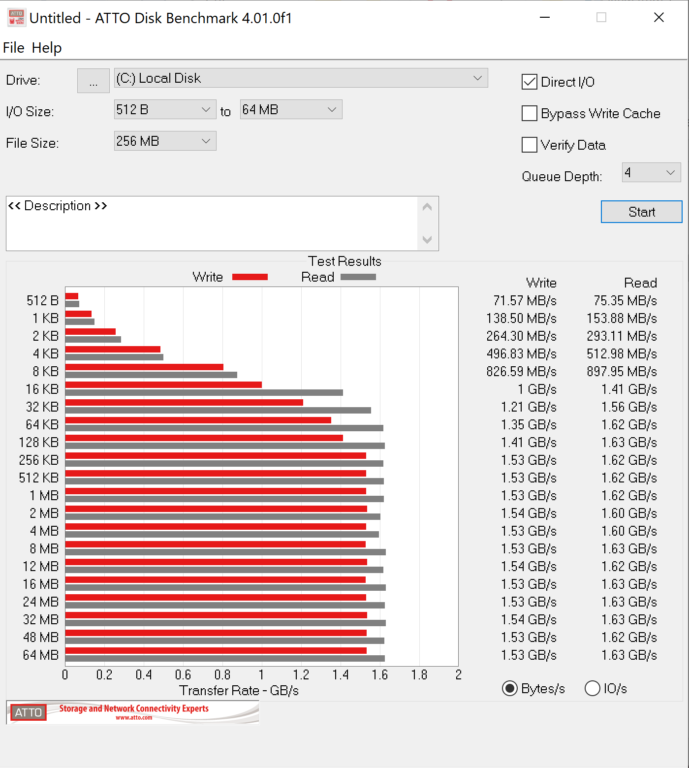INTEL H20 OPTANE MEMORY BENCHMARKS – OPTANE DISABLED
We thought it important to post our Intel Optane results with Optane disabled and one should be aware that these results are achieved with the SSD only operating in PCIe 3.0 two-lane, vice four-lane. There is simply no way to achieve 3GB/s with two-lane data throughput and the results provided are pretty much the maximum we can expect from a two-lane SSD. This is much the same as testing the latest Intel 670P Gen 3 QLC SSD in a two-lane scenario.
ATTO Disk Benchmark is perhaps one of the oldest benchmarks going and is definitely the main staple for manufacturer performance specifications. ATTO uses RAW or compressible data and, for our benchmarks, we use a set length of 256mb and test both the read and write performance of various transfer sizes ranging from 0.5 to 8192kb. Manufacturers prefer this method of testing as it deals with raw (compressible) data rather than random (includes incompressible data) which, although more realistic, results in lower performance results.

CRYSTAL DISK BENCHMARK VER. 7.0.0 x64
Crystal Disk Benchmark is used to measure read and write performance through sampling of random data which is, for the most part, incompressible. Performance is virtually identical, regardless of data sample so we have included only that using random data samples.
THROUGHPUT
IOPS
The toughest benchmark available for solid state drives is AS SSD as it relies solely on incompressible data samples when testing performance. For the most part, AS SSD tests can be considered the ‘worst case scenario’ in obtaining data transfer speeds and many enthusiasts like AS SSD for their needs.

ANVIL STORAGE UTILITIES PROFESSIONAL
Anvil’s Storage Utilities (ASU) are the most complete test bed available for the solid state drive today. The benchmark displays test results for, not only throughput but also, IOPS and Disk Access Times. Not only does it have a preset SSD benchmark, but also, it has included such things as endurance testing and threaded I/O read, write and mixed tests, all of which are very simple to understand and use in our benchmark testing.
 The SSD Review The Worlds Dedicated SSD Education and Review Resource |
The SSD Review The Worlds Dedicated SSD Education and Review Resource | 
An interesting scenario for engineer’s and production managers: Make an SSD that’s designed specifically for only laptop’s with extra large ram cache with roughly equal size dram (or have a desktop card with a 18650 holder { or caps? – with holder, customer who want can parallel more 18650 on demand} on board – like that gigabyte board).. Laptops have batteries, so loosing the data in the drive is not an issue if theres a battery. The OS can write frequently used data to ram cache primarily. The total drive cache will not be huge – perhaps 16, 32, 64gb to keep prices down. Put the duplication to dram in a queue for the firmware – when the drive is not being used, and then run it after the fact to keep read/write speeds to full dram speeds.